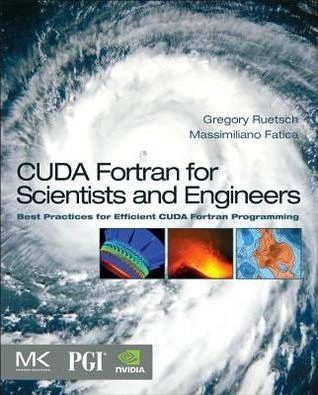
cuDSS (Preview) is an accelerated direct sparse solver. It now supports multi-GPU multi-node platforms, and introduces a hybrid memory mode.
]]>
NVIDIA GPUs have enormous compute power and typically must be fed data at high speed to deploy that power. That is possible, in principle, because GPUs also have high memory bandwidth, but sometimes they need your help to saturate that bandwidth. In this post, we examine one specific method to accomplish that: prefetching. We explain the circumstances under which prefetching can be expected��
]]>
The NVIDIA Ampere architecture provides new mechanisms to control data movement within the GPU and CUDA 11.1 puts those controls into your hands. These mechanisms include asynchronously copying data into shared memory and influencing the residency of data in the L2 cache. This post walks through how to use the asynchronous copy feature, and how to set up your algorithms to overlap��
]]>
Histograms are an important data representation with many applications in computer vision, data analytics and medical imaging. A histogram is a graphical representation of the data distribution across predefined bins. The input data set and the number of bins can vary greatly depending on the domain, so let��s focus on one of the most common use cases: an image histogram using 256 bins for each��
]]>
When writing parallel programs, you will often need to communicate values between parallel threads. The typical way to do this in CUDA programming is to use shared memory. But the NVIDIA Kepler GPU architecture introduced a way to directly share data between threads that are part of the same warp. On Kepler, threads of a warp can read each others�� registers by using a new instruction called SHFL��
]]>
This post is an excerpt from Chapter 4 of the book CUDA Fortran for Scientists and Engineers, by Gregory Ruetsch and Massimiliano Fatica. In this excerpt we extend the matrix transpose example from a previous post to operate on a matrix that is distributed across multiple GPUs. The data layout is shown in Figure 1 for an �� = 1024 �� 768 element matrix that is distributed amongst four devices.
]]>
In the previous CUDA C++ post we dove in to 3D finite difference computations in CUDA C/C++, demonstrating how to implement the x derivative part of the computation. In this post, let��s continue by exploring how we can write efficient kernels for the y and z derivatives. As with the previous post, code for the examples in this post is available for download on Github. We can easily modify the��
]]>
In the last CUDA Fortran post we dove in to 3D finite difference computations in CUDA Fortran, demonstrating how to implement the x derivative part of the computation. In this post, let��s continue by exploring how we can write efficient kernels for the y and z derivatives. As with the previous post, code for the examples in this post is available for download on Github. We can easily modify��
]]>
In the previous CUDA C/C++ post we investigated how we can use shared memory to optimize a matrix transpose, achieving roughly an order of magnitude improvement in effective bandwidth by using shared memory to coalesce global memory access. The topic of today��s post is to show how to use shared memory to enhance data reuse in a finite difference code. In addition to shared memory��
]]>
In the last CUDA Fortran post we investigated how shared memory can be used to optimize a matrix transpose, achieving roughly an order of magnitude improvement in effective bandwidth by using shared memory to coalesce global memory access. The topic of today��s post is to show how to use shared memory to enhance data reuse in a finite difference code. In addition to shared memory��
]]>
My last CUDA C++ post covered the mechanics of using shared memory, including static and dynamic allocation. In this post I will show some of the performance gains achievable using shared memory. Specifically, I will optimize a matrix transpose to show how to use shared memory to reorder strided global memory accesses into coalesced accesses. The code we wish to optimize is a transpose of a��
]]>
My previous CUDA Fortran post covered the mechanics of using shared memory, including static and dynamic allocation. In this post I will show some of the performance gains achievable using shared memory. Specifically, I will optimize a matrix transpose to show how to use shared memory to reorder strided global memory accesses into coalesced accesses. The code we wish to optimize is a transpose��
]]>
In the previous post, I looked at how global memory accesses by a group of threads can be coalesced into a single transaction, and how alignment and stride affect coalescing for various generations of CUDA hardware. For recent versions of CUDA hardware, misaligned data accesses are not a big issue. However, striding through global memory is problematic regardless of the generation of the CUDA��
]]>
In the previous post, I looked at how global memory accesses by a group of threads can be coalesced into a single transaction, and how alignment and stride affect coalescing for various generations of CUDA hardware. For recent versions of CUDA hardware, misaligned data accesses are not a big issue. However, striding through global memory is problematic regardless of the generation of��
]]>